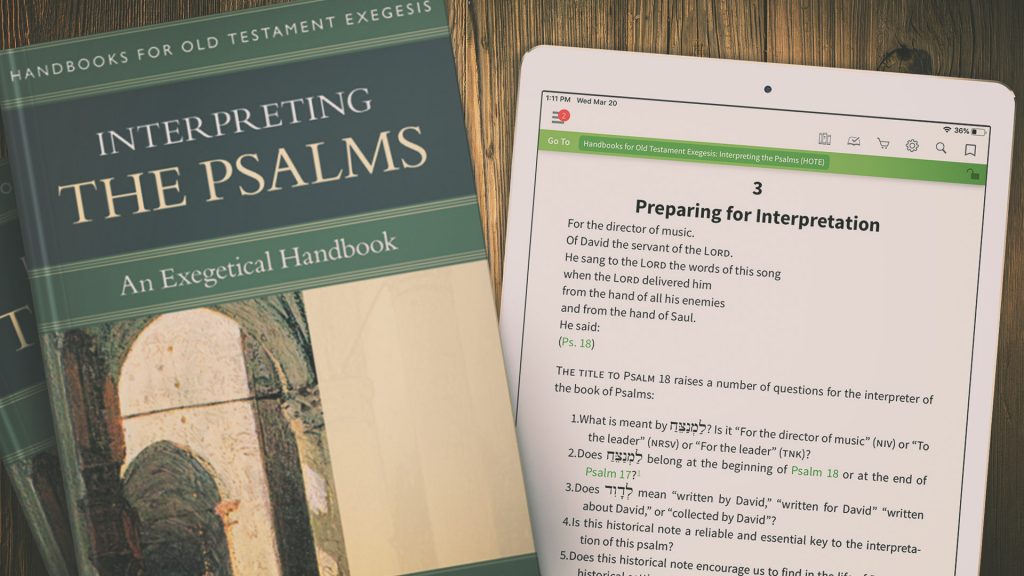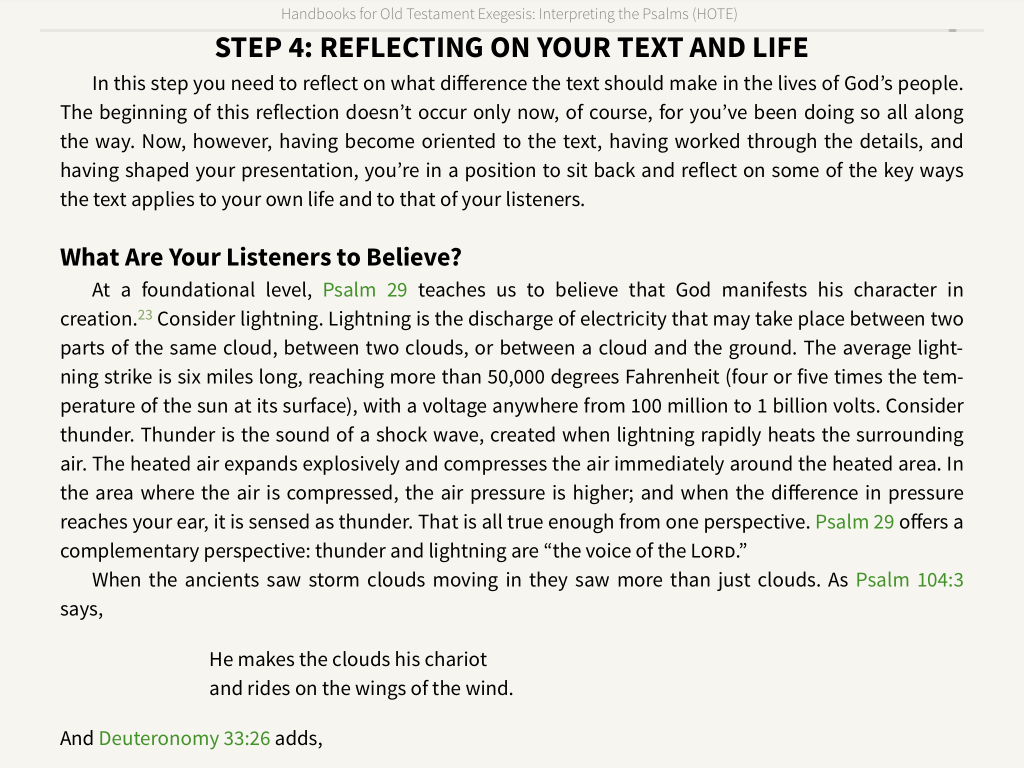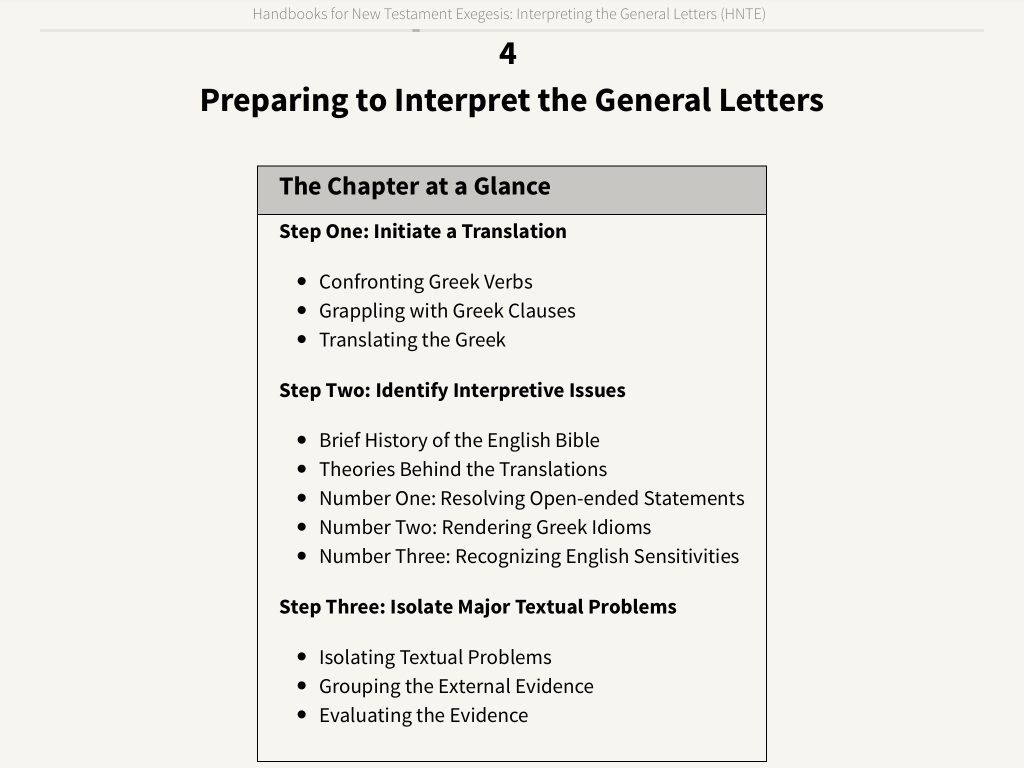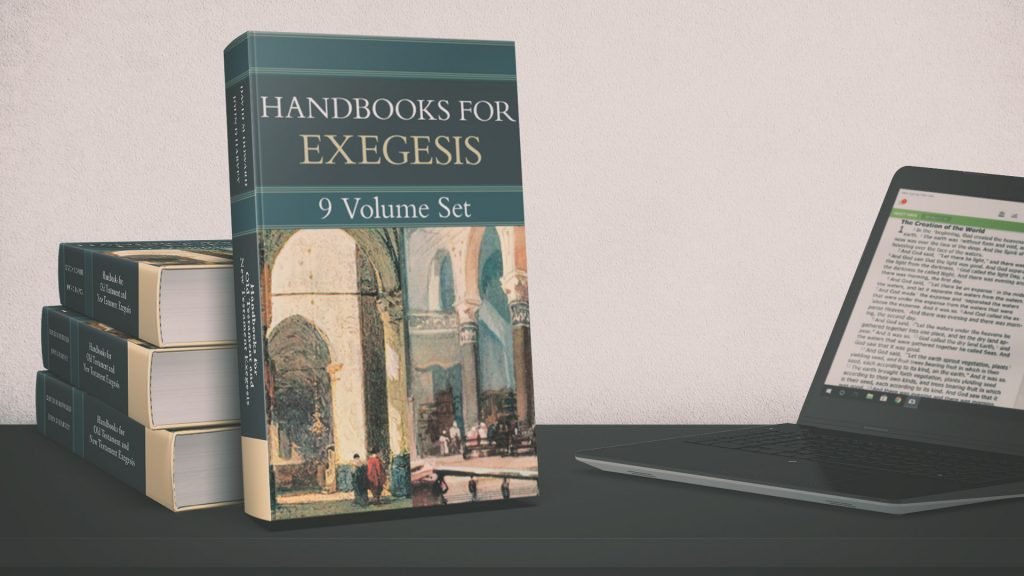If you teach the Bible, love exegesis, and are looking for a well-structured resource, we’ve got something new for you! Surprisingly, it isn’t a commentary or a dictionary. This time, we have a handbook series that is going to rock your Bible world.
So, let’s take a look inside the Handbooks for Exegesis 9 Volume Series.
A QUICK DESCRIPTION
If we were to summarize the purpose of this handbook series in one sentence, it would be this:
The Handbooks for Exegesis series exists to provide basic skills for exegeting and proclaiming the different genres of the Old and New Testaments.

WHO IS THIS FOR?
“The series is intended primarily to serve as textbooks and resources for seminary and graduate-level students who have completed at least a year of introductory Greek and Hebrew.” — the series editors
But, don’t worry. If it has been a few years since you put those languages to use or learning them has been on your to-do list, these handbooks can still work for you. An English translation is provided anywhere Greek and Hebrew are listed.

WHAT MAKES IT UNIQUE?
Typically, handbooks are meant to be quick reference books. Their primary purpose is to give you pertinent information on books in the Bible. This is much more than the info at the beginning of John in your study Bible, but less than info you get in wildly in-depth commentary.
So, how does the Handbooks for Exegesis differ from the average handbook?
First, the information isn’t laid out by specific book. Instead, each volume discusses one type of genre found in either the Old Testament or New Testament. You’re going to walk away with a better understanding of how to interpret the Bible based on literary techniques. More on this later…
Secondly, this series is specifically written with pastors/small group leaders/teachers in mind. Every volume culminates with examples of how you can take what you have learned and apply it to your teaching of God’s Word.

Next, let’s look even closer at the layout of this series.
THE LAYOUT
The authors of these volumes come from a variety of theological backgrounds and educational institutions. You’ll find that each author is highly committed to handling God’s Word well.
Although a lot of differences could arise with so many authors, there is a cohesive structure to the volumes. So, the same basic organization will make it possible for you to move easily from volume to volume.
Additionally, each chapter contains a “Chapter at a Glance” section, providing an overview at the beginning. Then, at the end of the chapter, there is a review section.

OLD TESTAMENT
In this series, six out of nine volumes cover genres of the Old Testament.
Pentateuch
Historical Books
Psalms
Prophetic Books
Wisdom Books
Apocalyptic Literature
Each volume contains six sections.
- The Nature of the Genres
- Viewing the Whole: Major Themes
- Preparing for Interpretation
- Interpreting the Text
- Proclaiming the Text
- Putting It All Together: From Text to Sermon
The authors titled the six chapters how they wanted. So, don’t be surprised. However, the structure does remain the same. Here is an overview of each section from the series editor:
The first chapter in each handbook introduces the genre(s) covered in the volume.
Then, the second chapter covers the purpose, message, and primary themes in the individual books and canonical sections under consideration.
Next, the third chapter includes such diverse matters as historical and cultural backgrounds, critical questions, textual matters, and a brief annotated bibliography of helpful works.
The fourth chapter sets forth guidelines for interpreting texts of the genre(s) under consideration.
The fifth chapter details strategies for proclaiming such texts.
Lastly, the final chapter gives one or two hands-on examples of how to move through different stages of the interpretive process, in order to demonstrate how the principles discussed previously work out in practice.
Each volume also includes a glossary of specialized terms. These terms are boldfaced at their first occurrence in each chapter.
NEW TESTAMENT
In this series, three out of nine volumes cover genres of the New Testament.
Pauline Letters
General Letters
Revelation and Other Apocalyptic Literature

Each volume will include the following chapters, named uniquely by the authors:
- The nature of the literary genre (including important subgenres)
- The background of the books (historical setting)
- The major themes of the books
- Preparing to interpret the books (textual criticism, translation)
- Interpreting passages in the context of their genre
- Communicating passages in the context of their genre
- From exegesis to exposition (two step-by-step examples)
- A list of selected resources and a glossary of technical terms
Next, here’s a quote from the series editor on how these sections work together:
“Each volume will (a) include a summary of the major themes present in the New Testament books covered by it; (b) set methods of interpretation in the context of the New Testament books to which those methods apply; (c) go beyond exegesis to exposition, by providing strategies for communicating each type of New Testament literature; (d) provide step-by-step examples which put into practice the methods and strategies set out in each volume, in the context of an overall exegetical-homiletical framework.”
HANDBOOKS FOR EXEGESIS

Interested in adding the Handbooks for Exegesis to your library? Choose between one volume, a few, or all nine!




0 Comments